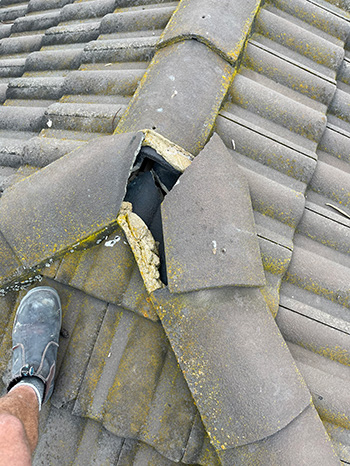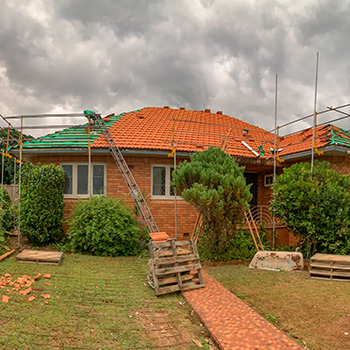 How do I know if my roof needs repair, restoration or replacement?
How do I know if my roof needs repair, restoration or replacement?
Vertex Roofing will carry out a thorough inspection of your roof and provide you with expert advice as to whether your roof needs repairs or a more complete restoration (or in extreme cases, a roof replacement). This is based solely on the best and most economical outcome for you – and of course, on your preferences. We do not up-sell – we simply give you a detailed explanation of our findings and your options.
There is a tipping point at which it makes better economical sense to you in the long run to undertake a more complete roof restoration rather than just repairing problem areas in a roof that is already old and showing significant signs of deterioration or widespread damage.
A roof restoration will have your roof looking brilliant and brand new! It will add loads of curb appeal to your home and can also dramatically increase the value of your home.
Signs your roof may need repair or restoration
The most obvious signs that your roof is no longer doing its job are water marks on your ceilings or water dripping (or pouring!) from your ceilings during heavy rainfall. But these issues may not arise until the roof’s integrity has been compromised for some time. Earlier signs to look out for are moisture in the roof cavity or a build-up of mould in your home. These issues indicate that water is getting in through the roof, perhaps through displaced or broken tiles or cracked mortar around the tiles.
It can be helpful to walk around the outside of your home and look up at your roof (from the safety of the ground!) for signs of deterioration.
- First give the whole roof a scan. Do any sections look like they’re sagging? Is there a general impression that your roof looks the worse for wear: faded tiles or peeling paint, or is it covered in moss and lichen?
- Now look at the ridge – the horizontal line of tiles running along the highest point of your roof (where two sloped roof surfaces meet). Do any of the triangular-shaped ridge tiles (also called capping tiles) look like they have shifted out of place, or are any cracked, broken or even missing? Can you see any cracks or gaps in the mortar around the tiles? Perhaps you can even see light coming through any gaps that shouldn’t be there.
- And now onto the hips – the sloping lines of capping tiles along the joins running down from the peak of your roof to the eaves. Do a visual check of those for cracked or missing tiles or mortar.
- Can you see the V-shaped valleys that run down the joins where two sloped roof surfaces meet at the low points? If so, can you see any streaks of rust or even holes where the metal lining has rusted through? Perhaps there is such a build-up of leaf matter and twigs in your roof’s valleys that you can hardly see the metal! This build-up can act as a dam for rainwater, causing water to pool on the roof instead of running off into the gutters. That means a greater chance of corrosion for the valleys and leaks in your roof!
 Was your home built before 1995?
Was your home built before 1995?
In older homes, the pointing material that was used was cement mortar, which was applied to the exposed edges of the ridge tiles to help create a stronger hold and a tighter seal. This cement mortar was prone to cracking with the natural contraction and expansion of the roof. In 1995, a flexible pointing material became available, which has the advantage of flexing with the movement of the roof without cracking or breaking off. Replacing the old cement mortar with flexible pointing material should keep your ridge tiles secure for 10+ years.





